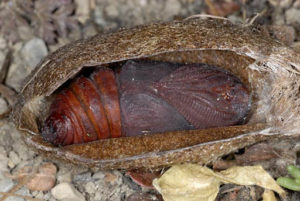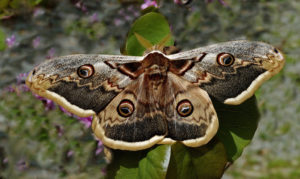Home / Saturniidae Moths (Saturniidae) / Giant Peacock Moth (Saturnia pyri)
Giant Peacock Moth (Saturnia pyri)
The giant peacock moth is a member of the family of saturniid moths, found throughout southern Europe. It is the largest moth in Europe and was first described by Austrian pair of priest Michael Denis and naturalist Ignaz Schiffermüller in 1775.
thepicosdeeuropa.com
Scientific Classification
- Family: Saturniidae
- Genus: Saturnia
- Scientific Name: Saturnia pyri
Description and Identification
Adult Moth
Sexual Dimorphism: Present but not prominent.
Color and Appearance
When the wings are opened, a variety of colors can be observed, including black, carmine, grey, olive green, and white. When the wings are closed, the patterns remain observable.
Average wingspan: 15-20 cm
Flight pattern: Erratic
Season: April to June
Quick Facts
| Distribution | Southern and eastern Bulgaria, Croatia, Czech Republic, southern France, southern Greece, northern Hungary, the Iberian Peninsula, north Israel, Italy, south Kyrgyzstan, Lebanon, North Macedonia, southern Romania, Russia, central and southern Serbia, Slovak Republic, Slovenia, western Syria, southern Turkey, Ukraine, and extends into Siberia and North Africa |
| Habitat | Dry, hot, and open landscapes |
| Lifespan of Adults | 6 weeks |
| Host Plants | Apple, ash, blackthorn, plum, poplar, and walnut |
| Adult Diet | Plant and tree sugars |
Did You Know
- This moth has caught the attention of several notable people from history, including Greek philosopher Aristotle, the 16th-century illustrator Jacobo Ligozzi and famous painter Vincent van Gogh.
Scientific Classification
- Family: Saturniidae
- Genus: Saturnia
- Scientific Name: Saturnia pyri








